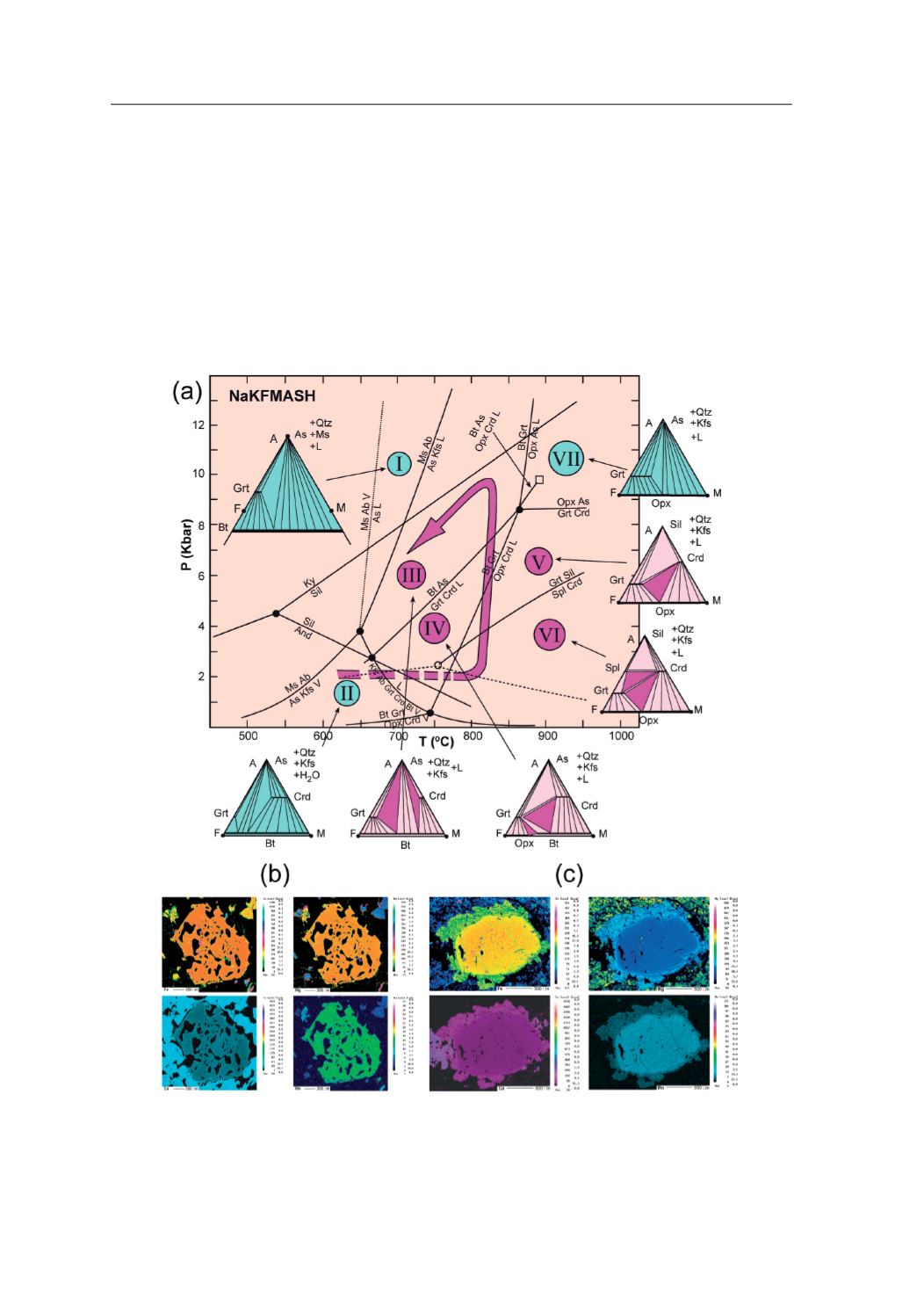
trital zircons, with source areas located in North
Africa (Fernández-Suárez
et al.
, 2003; Fuenlabra-
da
et al.
, 2010). On the other hand, one of the
diabase dykes intruding the greywackes has been
dated at
c.
510 Ma (U-Pb in zircon; Díaz García
et
al.
, 2010). The tectonic setting of the greywackic
series was studied by means of immobile trace el-
ements (La-Th-Sc; Bathia and Crook, 1986). The
greywackes were deposited in a basin fed with
material coming from an active continental mar-
gin (Fig. 17a). The greywackes have Nd model
ages in the range T
DM
= 720-1215 Ma (Fig. 17b),
which are significantly younger than those of the
Basal Units (Fig. 17b) and suggest participation
of younger source areas or incorporation to the
basin of juvenile Nd isotopic sources probably
derived from igneous rocks of the magmatic arc.
The O Pino Unit rests below the Betanzos
Unit, and is made of pelitic-semipelitic schists
and paragneisses intruded by variably sized
massifs of granitoids and gabbros, ranging from
40
3. GEOLOGICAL FRAMEWORK
Fig. 19.
(
a
) Counter clockwise P-T path calculated for the metapelitic granulites included in the Monte Castelo Gabbro
Massif (IP Upper Units). Petrogenetic grid after Spear
et al.
(1999). (
b
) X-ray maps of a granulitic garnet representative of
the low-P field VI. It is chemically homogeneous except for a relatively Ca-rich thin rim with growth zoning. (
c
) X-ray maps
of a granulitic garnet representative of the baric peak. Note the xenomorphic overgrowth surrounding an unzoned lower
pressure core. Modified after Abati
et al.
(2003).








